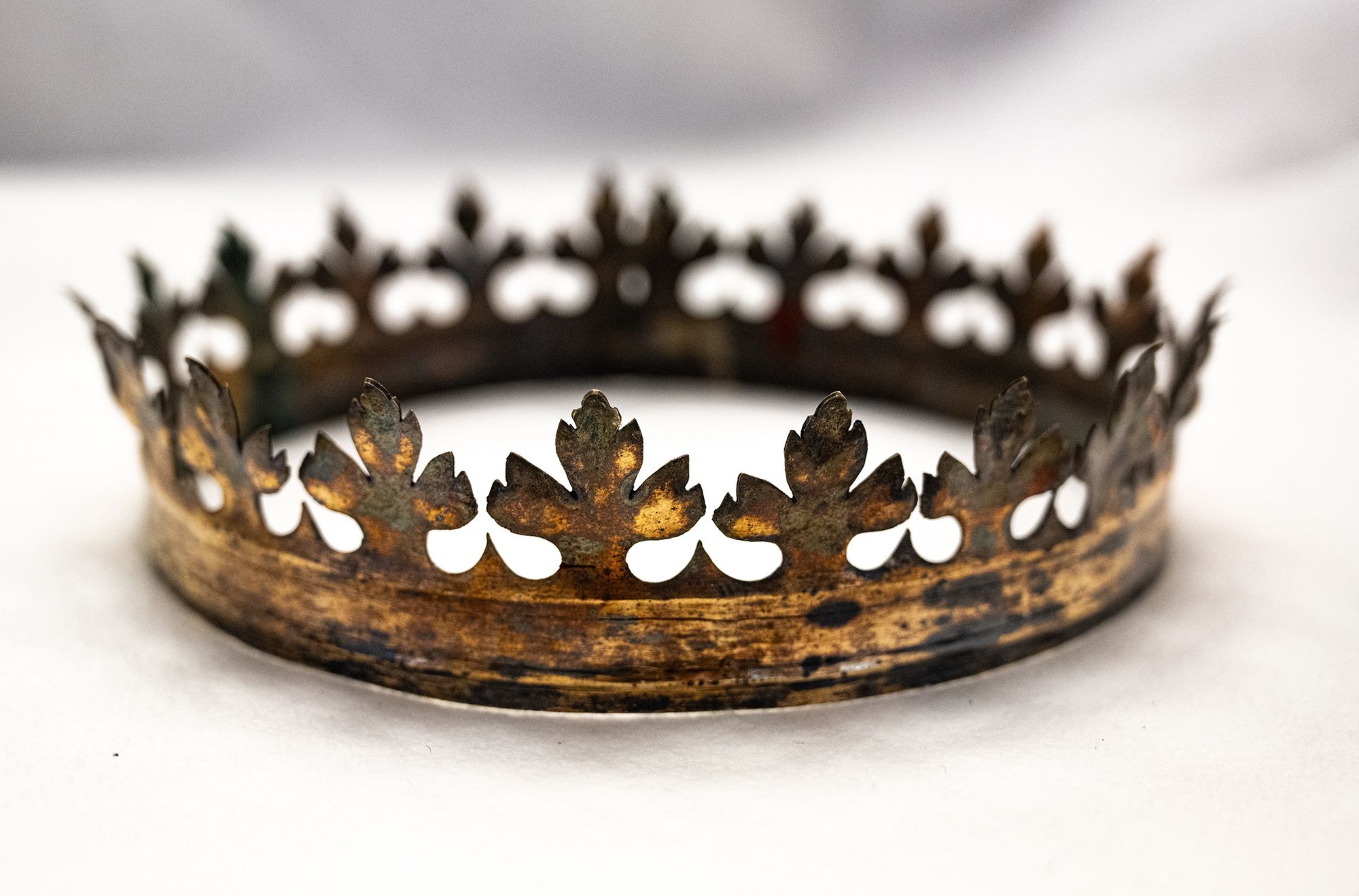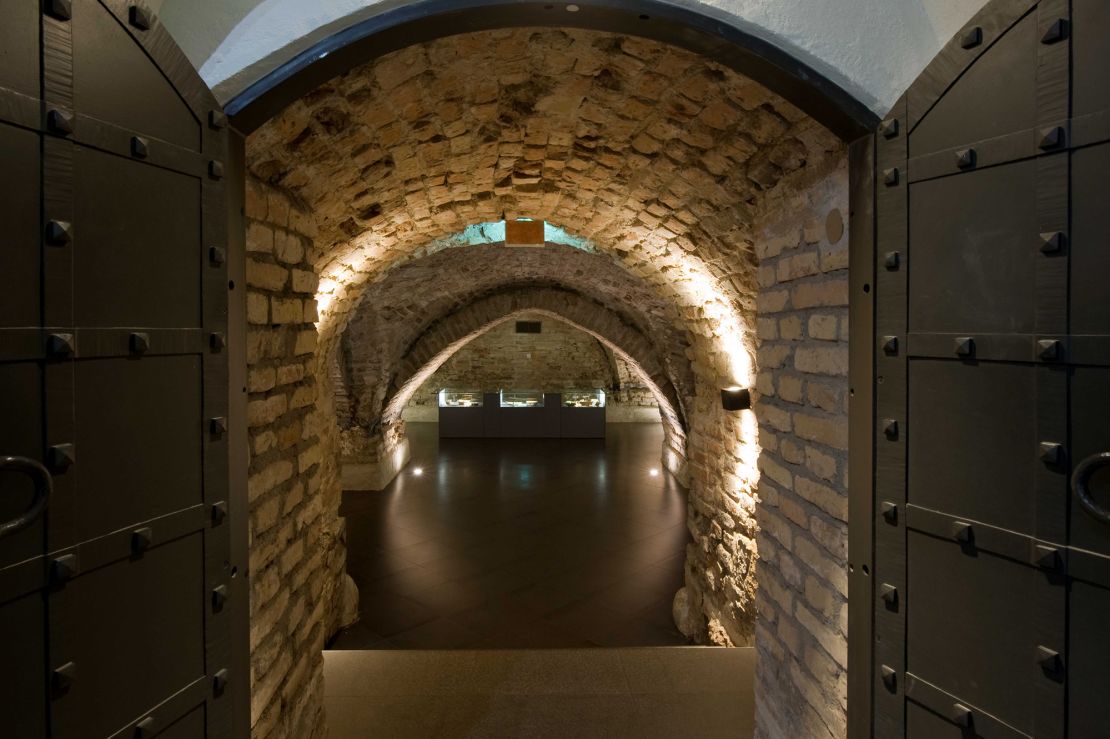Uncovering the Secrets of the Past: Royal Treasures Resurface After Decades of Mystery
Imagine walking into a centuries-old cathedral, the air thick with history and whispers of the past. Suddenly, you stumble upon a hidden treasure trove, concealed for decades, and carrying with it the secrets of a bygone era. This is no fictional tale, but a real-life discovery that has left historians and treasure enthusiasts alike in awe. According to a recent report by CNN, a treasure trove of royal artifacts, believed to have been hidden since World War II, has been unearthed from the depths of a majestic cathedral in Europe. As we delve into the story of this incredible find, you’ll be transported to a world of mystery, intrigue, and wonder.
Get ready to uncover the secrets of the past and join us as we explore the fascinating tale of the royal treasures that have resurfaced, bringing with them a glimpse into the lives of the monarchs who once ruled with an iron
Hidden Treasures of Vilnius Cathedral

The recently recovered burial insignia from Vilnius Cathedral, in Lithuania, are a treasure trove of historical significance. Among the items found were crowns, chains, medallions, and coffin plaques belonging to Medieval European rulers. The crowns, made after death to form part of the burial tomb, would not have been worn. Instead, they were placed inside the sarcophagi of the royals when they were laid to rest.
The burial insignia are of immense importance in Lithuanian history, symbolizing the long tradition of Lithuanian statehood. They also serve as a testament to the country’s cultural and historical heritage, reflecting the burial and honouring practices of the time.
Description of the Artifacts
- A crown belonging to Alexander Jagiellon, King of Poland and Grand Duke of Lithuania, who lived from 1461–1506
- A crown, a chain, a medallion, a ring and a coffin plaque belonging to Elizabeth of Austria, who lived from 1436–1505
- A crown, a scepter, an orb, three rings, a chain and coffin plaques associated with Barbara Radziwiłł, who was married to Sigismund II Augustus, King of Poland and Grand Duke of Lithuania, and died in 1551
The burial insignia were recovered from a hiding place where they were stored in 1939. They will be examined, restored and presented to the public in the future.
A Century of Secrets
The burial insignia were first discovered in 1931 when the cathedral was being cleaned following a spring flood, revealing a crypt containing the remains of the rulers. They were put on display until World War II broke out in 1939, when they were hidden. Several fruitless searches were carried out before researchers turned their attention to the crypts in September 2024.
Using an endoscopic camera, the artifacts were finally recovered in December, wrapped in newspapers dated September 1939. The team’s perseverance and determination paid off, uncovering a treasure that had been hidden for decades.
The Search and Recovery
The search for the burial insignia was a challenging and complex process. Researchers had to navigate the crypts of the cathedral, using an endoscopic camera to locate the hidden treasures. The team’s expertise and attention to detail were crucial in uncovering the artifacts.
The recovery of the burial insignia was a significant achievement, requiring patience and perseverance. The team’s success is a testament to their dedication and commitment to uncovering the secrets of the past.
The Importance of the Discovery

The discovery of the burial insignia is of immense importance for Lithuania, reflecting the country’s long tradition of statehood. The artifacts are a symbol of European identity and a reclaimed identity of the old State, showcasing the strength of Lithuania’s roots.
The burial insignia are also of significant cultural and historical importance, providing a unique insight into the burial and honouring practices of the time. They are a valuable resource for art historians, archaeologists, and cultural enthusiasts.
Practical Aspects and Implications

The conservation and restoration of the burial insignia is a complex process, requiring careful consideration and attention to detail. The team will work to preserve the artifacts, ensuring their long-term preservation for future generations.
The discovery of the burial insignia has significant implications for Lithuania’s tourism industry, providing a unique attraction and cultural experience for visitors. The artifacts will be put on display, allowing the public to appreciate their beauty and historical significance.
Conclusion
As we conclude our exploration of the astonishing discovery of royal treasures hidden since World War II recovered from a cathedral, it is evident that this find holds immense historical significance. The article revealed how the treasures, believed to be hidden to protect them from Nazi looting, were unearthed in the crypt of the Sainte-Chapelle cathedral in Paris. The artifacts, including precious jewels and sacred relics, provide a unique window into the lives of French monarchs and the country’s tumultuous past.
The recovery of these treasures not only sheds new light on a forgotten chapter in history but also highlights the resilience and ingenuity of those who risked everything to preserve these cultural and national treasures. As we reflect on this remarkable discovery, we are reminded of the importance of preserving our collective heritage and the significance of uncovering hidden truths. The implications of this find are far-reaching, offering a glimpse into the complex web of power, politics, and intrigue that shaped the course of European history.
As we look to the future, it is clear that this discovery will continue to captivate and inspire us, sparking new avenues of research and exploration. Moreover, it serves as a poignant reminder of the importance of preserving our cultural and historical heritage for future generations. As we gaze upon the recovered treasures, we are reminded that the past is never truly lost, and that even the most hidden secrets can hold the power to transform our understanding of the world.

